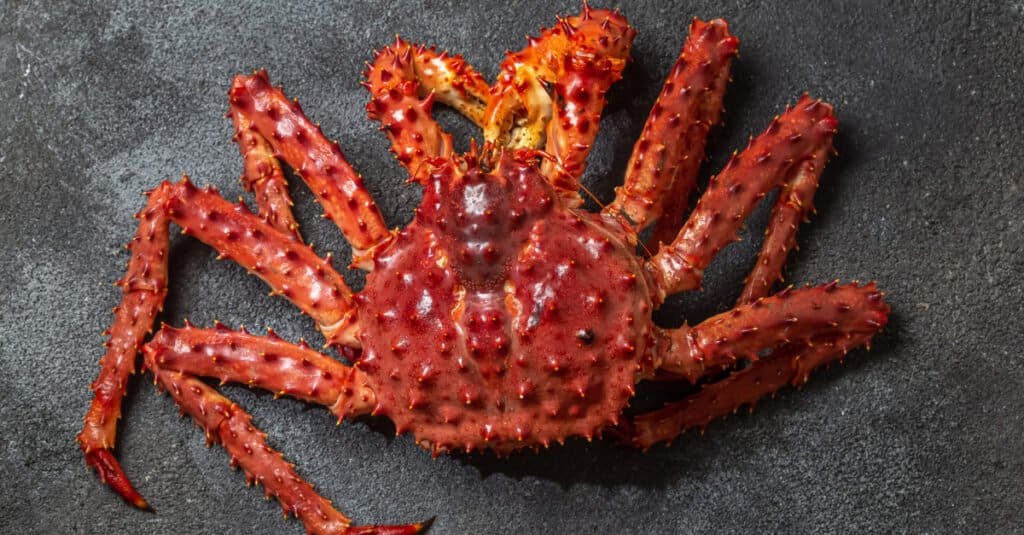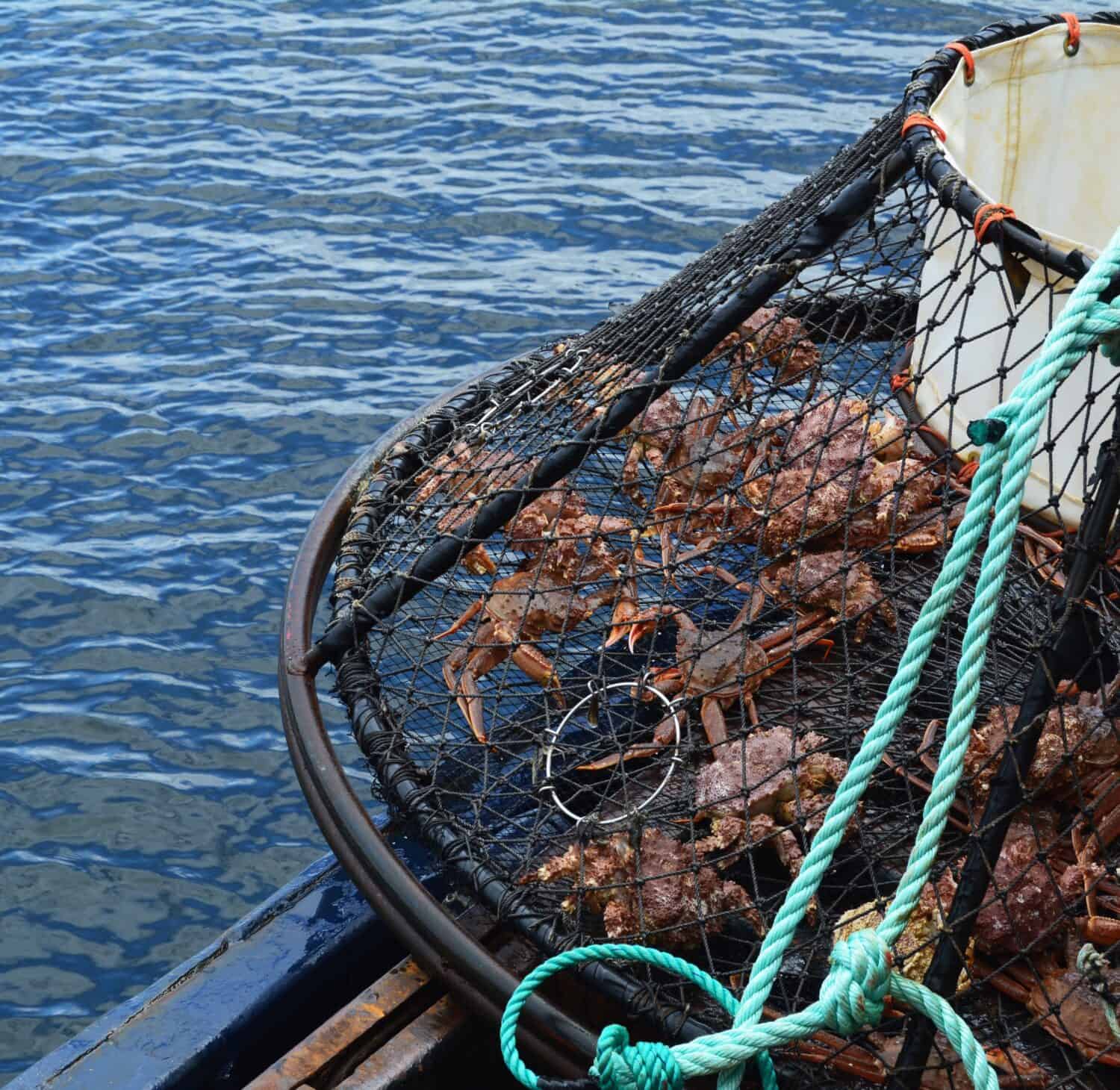There is nothing like cracking open a giant, juicy crab leg! What makes it even better? If that leg belonged to the most delicious and rare crab species, the king crab. Since these crabs are so highly sought after, many anxiously await the king crab season each year. Although, not many know the intricate ins and outs of this season. That’s what we’re here to explain!
There are a number of types of king crabs, including red, blue, and golden king crabs. These crabs have specific quality criteria and hunting restrictions, making the art of crab fishing more intricate and complex than most would initially think. To learn more about when and where this crab species is hunted, as well as the work that goes into acquiring these crustaceans, read on!
The Timing and Location of King Crab Season

King crab season changes in length and dates each year, but it always occurs during the winter.
©Larisa Blinova/Shutterstock.com
If you’re interested in when and where this special hunting season takes place, here’s what you need to know. King crab season runs during the cold months of the year. This varies, of course, but typically it will fall anywhere between October and January. It mostly depends on how quickly temperatures begin dropping. In terms of length, that varies too! It can last anywhere from weeks to months, and the fisherman involved in the catching process tries to get in as much capturing as possible before the season’s end.
As for location, the hunting of king crabs only really happens in one place in the United States. This is, of course, Alaska. These crabs are integral to the state’s culture as well as its economy, as crabs are a hefty export of the state.
The Work That Comes With Catching King Crabs

Unlike other kinds of crab that can be produced on farms, a king crab has to be caught from the wild before being distributed.
©shorex.koss/Shutterstock.com
Something that might be on your mind is the pricing of king crabs, alongside their occasional scarcity. What makes this particular kind of crab so difficult to get your hands on, as well as so expensive? Well, that has something to do with the amount of work and time that it takes to capture these crabs. Unlike other crabs bred on farms, these crabs are always captured in the wild during king crab season. This makes them much more appealing to consumers but much more daunting to those who actually do the catching.
Once those crabs are finally captured, the work doesn’t stop. The meat then needs to be carefully taken out of the crab’s shell before it is then frozen for preservation. This effort seems to be worth it, though, because many experts agree that king crab is among some of the most delicious seafood dishes. With their delicious taste and appealing texture, the demand for these crabs won’t dwindle any time soon.
King Crab Sizes
Quantities of king crab are typically measured in sizes, and these sizes are based on the estimation of how many legs can be taken into a ten-pound amount of crab. For instance, a set of crabs with the numbers 12/14 means exactly what you’d think at face value, that there are going to be 12/14 crab legs in a ten-pound batch. There’s obviously no standard way to measure the quality of a crab based on the size, but expect to pay more for larger crabs with lower leg counts. Larger king crabs are rarer, and rarity generally translates to priciness.
King Crab Season Rules and Regulations

King crab might be delicious, but regulations are placed on its hunting season to preserve the population of the species.
©Vintagepix/Shutterstock.com
As we mentioned earlier, the king crab season’s starting and ending dates vary each year based on crab populations and other ecological indicators. Typically, the seasons have been shorter in the past few decades. Sometimes they span only a few days to a couple of weeks. These short seasons protect the crab populations from overfishing. A quota system is also in place, which sets a total allowable catch for the season, again ensuring that crab populations are not overly depleted. Once this quota is met, the season ends, even if it’s earlier than the predetermined end date. After all, if we overhunted, there would be none left to repopulate the species.
Other restrictions are also set in place, like size and gender restrictions. Young crabs, as well as females, are often released (or encouraged to be released) at certain points throughout the season. This is, of course, in order to make sure the species has good ground to be repopulated. Safety restrictions are set up as well, with specific equipment necessary on your vessel in order to conduct legal fishing. This can be a dangerous job, so it’s imperative that you’re trained and competent!
The photo featured at the top of this post is © shorex.koss/Shutterstock.com
Thank you for reading! Have some feedback for us? Contact the AZ Animals editorial team.







